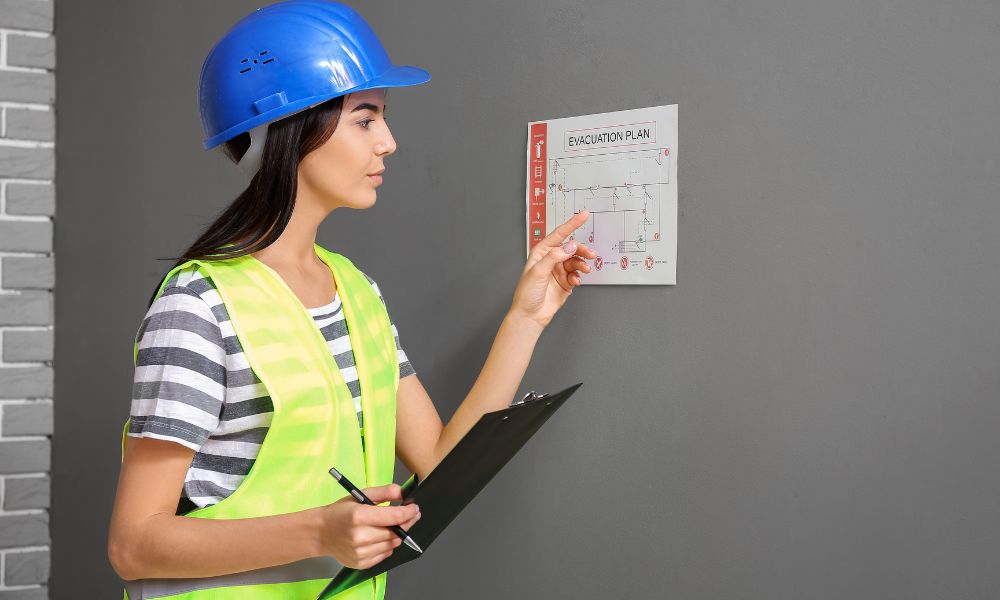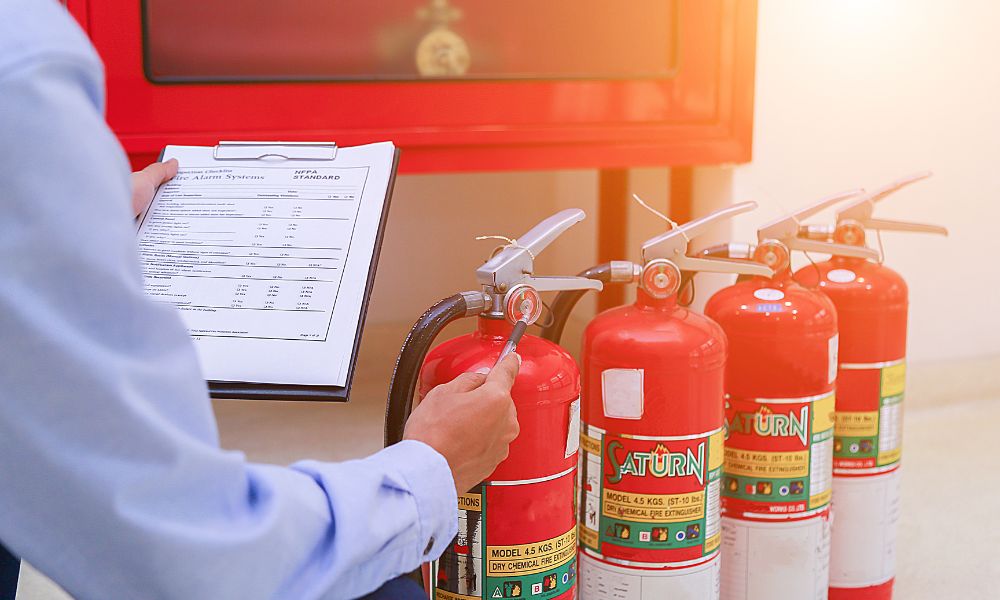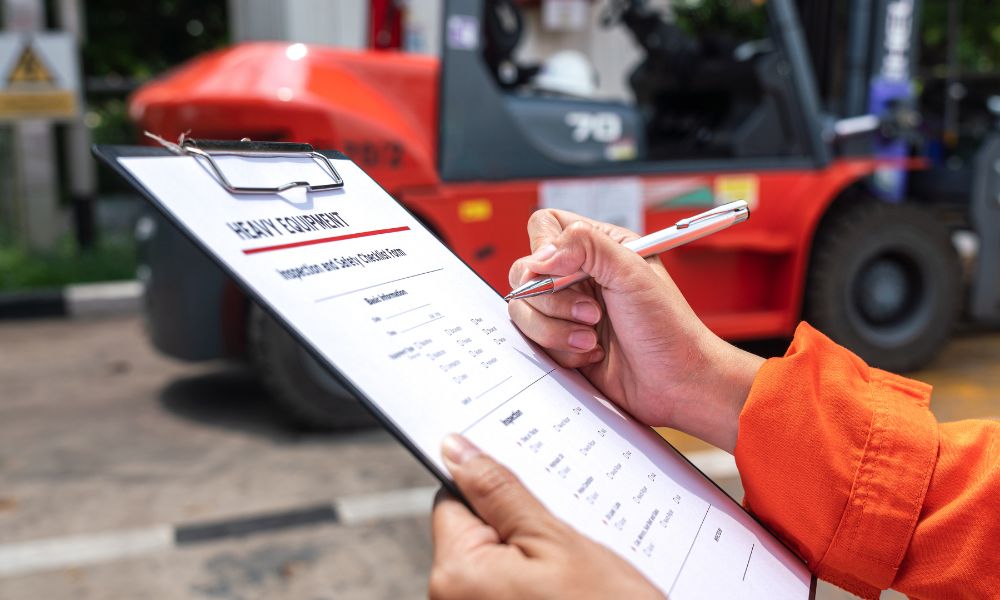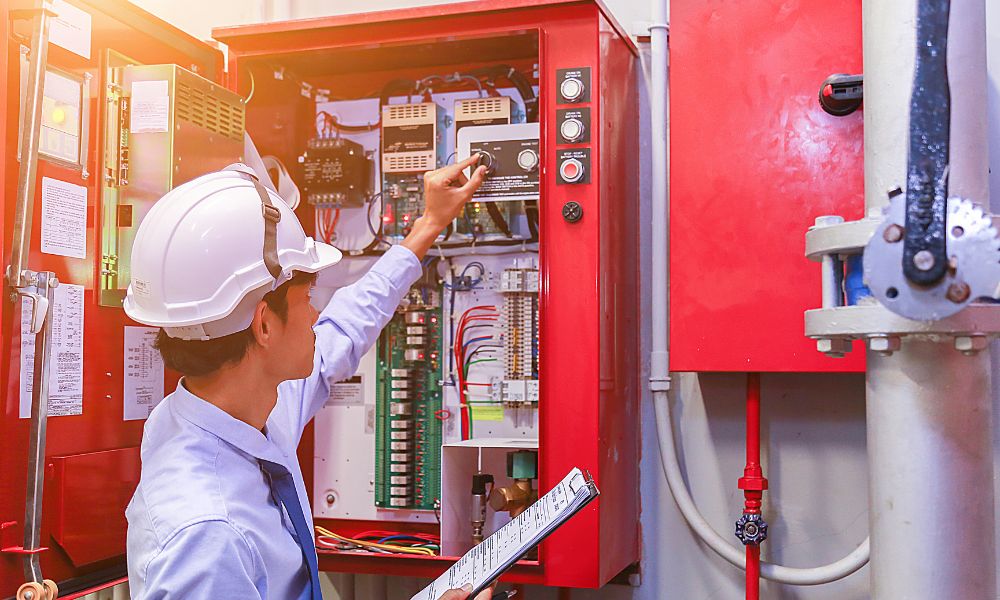Fire safety inspection is a crucial part of ensuring the safety of buildings and their occupants. These inspections are typically conducted by local fire departments or other qualified inspectors and involve a thorough examination of a building’s fire safety systems and procedures.
The goal of these inspections is to identify potential fire hazards and ensure that all necessary precautions are in place to prevent fires and minimize their impact if they do occur.
During a fire safety inspection, inspectors will typically examine a variety of factors, including the building’s fire suppression systems, smoke detectors, emergency lighting, and exit routes.
They may also review the building’s fire safety plan, which should outline procedures for evacuating the building in the event of a fire. Inspectors may also look for potential fire hazards, such as improperly stored flammable materials or overloaded electrical outlets.
Overall, fire safety inspections are an important part of maintaining the safety of buildings and their occupants. By identifying potential hazards and ensuring that all necessary precautions are in place, these inspections can help prevent fires and minimize their impact if they do occur.
Building owners and managers should take these inspections seriously and work closely with inspectors to ensure that their buildings are as safe as possible.
Legal Framework for Fire Safety Inspections
Regulatory Standards
Fire safety inspections are governed by a set of regulatory standards that vary depending on the jurisdiction. These standards are designed to ensure that buildings are constructed and maintained in a way that minimizes the risk of fire and ensures the safety of occupants.
The specific standards may include requirements for fire alarms, sprinkler systems, fire doors, and other safety features.
In the United States, the National Fire Protection Association (NFPA) is a leading organization that develops and publishes fire safety codes and standards. These standards are widely adopted by local and state governments and are used as the basis for fire safety inspections. The NFPA standards cover a wide range of topics, including fire prevention, fire suppression, and emergency response.
Inspection Mandates
Fire safety inspections are typically conducted by local fire departments or other government agencies. These inspections are mandated by law and are designed to ensure that buildings are in compliance with regulatory standards.
The frequency of inspections may vary depending on the type of building and its intended use. For example, a high-rise office building may be inspected more frequently than a small retail store.
During an inspection, the inspector will typically look for potential fire hazards and ensure that all safety features are in working order. This may include checking fire alarms, sprinkler systems, fire doors, and other safety features. If any violations are found, the inspector may issue a citation and require the building owner to make the necessary repairs or upgrades.
Overall, fire safety inspections play a critical role in ensuring the safety of buildings and their occupants. By adhering to regulatory standards and conducting regular inspections, building owners can minimize the risk of fire and protect the lives and property of those who use their buildings.
Fire Safety Pre-Inspection Procedures

Scheduling and Notification
Before conducting a fire safety inspection, it is important to schedule a date and time that is convenient for both the inspector and the building owner or manager.
The inspector should provide advanced notice to the building owner or manager of the scheduled inspection date and time, typically at least 48 hours in advance.
This allows the building owner or manager to prepare for the inspection and ensure that all necessary personnel and documentation are available.
Checklist Preparation
Prior to the inspection, the inspector should prepare a comprehensive checklist of all areas and systems to be inspected.
The checklist should include items such as fire alarms, sprinkler systems, emergency lighting, exits, and fire extinguishers. The checklist should also include any specific requirements or regulations that apply to the building or occupancy type.
It is important for the inspector to review the checklist and become familiar with all relevant codes and regulations prior to the inspection. This will ensure that the inspection is thorough and that all necessary items are inspected.
During the inspection, the inspector should use the checklist to document any deficiencies or violations observed.
This documentation will be used to prepare a report of findings and recommendations for the building owner or manager. The report should include a prioritized list of recommendations for correcting any deficiencies or violations identified during the inspection.
Conducting the Inspection
When conducting a fire safety inspection, there are several important steps that must be taken to ensure a thorough assessment of the premises. The following subsections outline the key components of a fire safety inspection.
On-Site Assessment
The first step in conducting a fire safety inspection is to conduct an on-site assessment of the premises. This involves a physical inspection of the property to identify potential fire hazards, such as improperly stored flammable materials, blocked exits, or faulty electrical wiring.
The inspector should also assess the overall fire safety of the building, including the availability and functionality of fire alarms, sprinkler systems, and other fire suppression equipment.
Risk Identification
Once potential hazards have been identified, the inspector must assess the level of risk associated with each hazard. This involves evaluating the likelihood of a fire occurring and the potential consequences if a fire were to break out.
For example, a pile of flammable materials stored near an ignition source may pose a high risk, while a small amount of clutter in a storage room may pose a lower risk.
Documentation and Evidence Collection
Throughout the inspection process, it is important to document all findings and collect evidence to support any violations or deficiencies identified. This may include photographs, videos, and written notes. The inspector should also document any corrective actions taken or recommendations made to the property owner or manager.
By following these steps, fire safety inspectors can ensure a thorough assessment of the premises and identify potential hazards before they become a serious threat.
Fire Safety Post-Inspection Process

Report Writing
After conducting a fire safety inspection, the inspector must compile a report detailing their findings. The report should include a summary of the inspection, any violations found, and recommendations for corrective action. The report should be clear and concise, using simple language that is easy for the reader to understand.
To ensure accuracy, the inspector should take detailed notes during the inspection and refer to any applicable codes or regulations. The report should be formatted in a professional manner, with headings and subheadings to help organize the information.
Follow-Up Recommendations
Once the report has been completed, the inspector should provide a copy to the building owner or manager. The report should include recommendations for corrective action, including a timeline for completion. It is important for the inspector to follow up with the building owner or manager to ensure that the recommended actions have been taken.
If violations are found during the inspection, the inspector may issue a citation or order to correct the violation. The building owner or manager may be required to appear in court or pay a fine if the violation is not corrected in a timely manner.
Overall, the post-inspection process is a crucial step in ensuring fire safety in buildings. By providing clear and concise reports and following up on recommendations, inspectors can help prevent fires and protect the lives and property of building occupants.
Training and Education for Inspectors
Certification Requirements
Fire safety inspectors must complete a rigorous training program to become certified. The certification requirements vary by state, but most states require inspectors to have a high school diploma or equivalent, and some require a college degree in fire science or a related field.
Additionally, inspectors are required to complete a state-approved training program, which typically includes classroom instruction, hands-on training, and an exam.
The exam usually covers topics such as fire codes and regulations, fire prevention, fire suppression systems, and emergency planning. Once an inspector passes the exam, they are certified to conduct fire safety inspections.
Ongoing Professional Development
Fire safety inspectors are required to complete ongoing professional development to maintain their certification. This includes attending regular training sessions and staying up-to-date on changes to fire codes and regulations.
Inspectors may also be required to complete continuing education courses to stay current on new technologies and techniques in fire prevention and suppression.
In addition to attending training sessions and completing continuing education courses, inspectors may also participate in professional organizations and associations to network with other inspectors and stay current on industry trends and best practices.
Fire Safety Inspection Checklist

A fire safety inspection checklist is a comprehensive tool used to assess and ensure compliance with fire safety regulations and protocols in various facilities. Here’s a sample checklist that can be adapted for different types of buildings:
1. Fire Alarms
- Are fire alarms installed in all required areas?
- Are fire alarms operational, regularly tested, and maintained according to regulations?
- Are audible and visual signals functioning properly?
2. Smoke Detectors
- Are smoke detectors installed in all required areas, including bedrooms and common areas?
- Are smoke detectors operational and tested regularly?
- Are batteries replaced as needed?
3. Emergency Lighting
- Are emergency lighting systems installed in all required areas?
- Are emergency lights tested periodically to ensure functionality during power outages?
4. Fire Extinguishers
- Are fire extinguishers strategically placed throughout the facility?
- Are fire extinguishers inspected regularly and serviced as required?
- Are fire extinguisher locations clearly marked and easily accessible?
5. Exit Signs
- Are exit signs clearly visible and properly illuminated?
- Are exit routes free from obstructions and clearly marked?
6. Emergency Exit Doors
- Are emergency exit doors clearly marked and easily accessible?
- Are emergency exit doors kept unlocked during business hours?
- Are emergency exit doors equipped with panic hardware?
7. Electrical Systems
- Are electrical systems inspected regularly for potential fire hazards?
- Are outlets, switches, and electrical panels properly maintained and in good condition?
- Are extension cords and electrical appliances used safely and according to regulations?
8. Fire Suppression Systems
- Are fire suppression systems, such as sprinklers or fire hoses, installed and properly maintained?
- Are fire suppression systems tested periodically as required?
9. Storage and Housekeeping
- Is combustible material stored properly and away from potential ignition sources?
- Is the facility free from excessive clutter and debris that could contribute to fire hazards?
10. Employee Training
- Are employees trained in fire safety procedures, including evacuation routes and the proper use of fire extinguishers?
- Is there a documented record of fire safety training for all employees?
11. Documentation
- Are records of fire safety inspections, tests, and maintenance activities maintained and up to date?
- Are emergency contact numbers posted prominently in the facility?
12. Special Hazards
- Are there any specific fire hazards or special considerations unique to the facility that need to be addressed?
This checklist serves as a guideline and should be customized to suit the specific needs and requirements of your facility. Regular inspections and adherence to fire safety protocols are essential for ensuring the safety of occupants and compliance with regulations.
Overall, the training and education requirements for fire safety inspectors are designed to ensure that they have the knowledge and skills necessary to conduct thorough and effective fire safety inspections. By staying current on the latest technologies and techniques, inspectors can help prevent fires and protect the safety of the public.
Frequently Asked Questions: Fire Safety Inspection
What items are typically included on a fire safety inspection checklist?
A fire safety inspection checklist typically includes items such as smoke detectors, fire alarms, fire extinguishers, emergency lighting, exit signs, sprinkler systems, and fire doors. The checklist may also include the inspection of electrical systems, heating systems, and cooking equipment.
How often are commercial buildings required to undergo a fire safety inspection?
Commercial buildings are required to undergo a fire safety inspection at least once a year. However, the frequency of inspections may vary depending on the type of building, its occupancy, and the local fire code.
What are the steps to take to prepare for a home fire safety inspection?
To prepare for a home fire safety inspection, it is recommended to ensure that all smoke detectors are working properly, fire extinguishers are easily accessible, and all exits are clear of any obstructions. Homeowners should also review their home insurance policy to ensure they have adequate coverage in case of a fire.
What are the common requirements for fire safety in apartment buildings?
Common requirements for fire safety in apartment buildings include the installation of smoke detectors in each unit, the availability of fire extinguishers and emergency lighting in common areas, and the provision of clear exit paths. Apartment buildings may also be required to have sprinkler systems and fire doors installed.
What is the primary objective of conducting fire safety inspections?
The primary objective of conducting fire safety inspections is to identify potential fire hazards and ensure that all fire safety equipment and systems are functioning properly. Inspections help to prevent fires, reduce the risk of injury or death, and minimize property damage in the event of a fire.
How can I report a potential fire hazard in my local area?
To report a potential fire hazard in your local area, contact your local fire department or fire marshal’s office. They will be able to investigate the issue and take appropriate action to address any potential hazards.

I’m Abdus Sobur, a highly skilled and professional Fire Safety Officer with a passion for safeguarding lives and property. Over the course of my career, I’ve conducted numerous successful fire safety audits, earning a reputation for excellence in ensuring public safety.
In addition to my role as a Fire Safety Officer, I’m also dedicated to raising awareness about the importance of fire safety. Through my blog, I share insights into the functions of different fire safety equipment, aiming to empower individuals with the knowledge they need to protect themselves and their communities.
I’m driven by a deep commitment to promoting fire safety awareness and preventing fire-related incidents.

